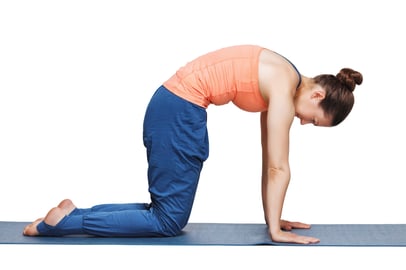 After a workout, it’s important to relax your mind and body. A great way to make sure the muscles are relaxed after a workout is to stretch. Many people overlook the importance of flexibility in fitness, not realizing that with improved flexibility you can enhance your workouts.
After a workout, it’s important to relax your mind and body. A great way to make sure the muscles are relaxed after a workout is to stretch. Many people overlook the importance of flexibility in fitness, not realizing that with improved flexibility you can enhance your workouts.
Even just adding in 5 to 10 minutes of stretching after a workout is better than nothing! You do not have to set aside 30 minutes a day for flexibility; quick sessions after a workout are great to relieve the tension in your muscles. When I stretch after a workout session, I can tell I have a better range of motion, my muscles are pliable, and the stress from the workout eases tremendously. Most mornings when I wake up, it’s a struggle to even be able to touch my toes. With a quick stretch, I am instantly moving better.
Flexibility’s Role in Functional Movement
Flexibility is often overlooked because it’s not something seen as a component of health and wellness. When it comes to exercise, most people are looking to lose weight, run faster, lift heavier weights, and become a stronger person overall. They fail to realize that when you improve your flexibility, you will also increase your workout performance as well as increase your ability to tackle everyday activities (functional fitness).
As we age, we know it becomes increasingly difficult to be as mobile as we were before. Bones become more fragile and muscles tend to lose elasticity. This is where flexibility really comes into play. When you keep up with stretching and loosening those muscles daily with flexibility, you are increasing your body’s range of motion. With a greater range of motion comes the ease of accomplishing everyday activities.
The Best Time to Stretch
When’s the best time to stretch? The best time to static stretch is after a workout. Many of us have been taught that it is important to warm up the muscles with stretching before exercise. Many scientists have determined that is not the case. Stretching the muscles before an intense exercise session can do more harm to them than good; it may actually inhibit the ability for the muscle to fire when it is supposed to.
It is important to warm the muscles up with dynamic movements versus static. Dynamic exercises will activate the reflexes in the muscles and tendons, whereas static stretching is just pulling on the muscles before they are warmed up. Static stretching is best after exercise during recovery because it helps the body cool down from a workout; the muscles are warm from the workout, making them easier to stretch.


 You know you want and need to have a regular plan for your exercise, but where do you begin to
You know you want and need to have a regular plan for your exercise, but where do you begin to